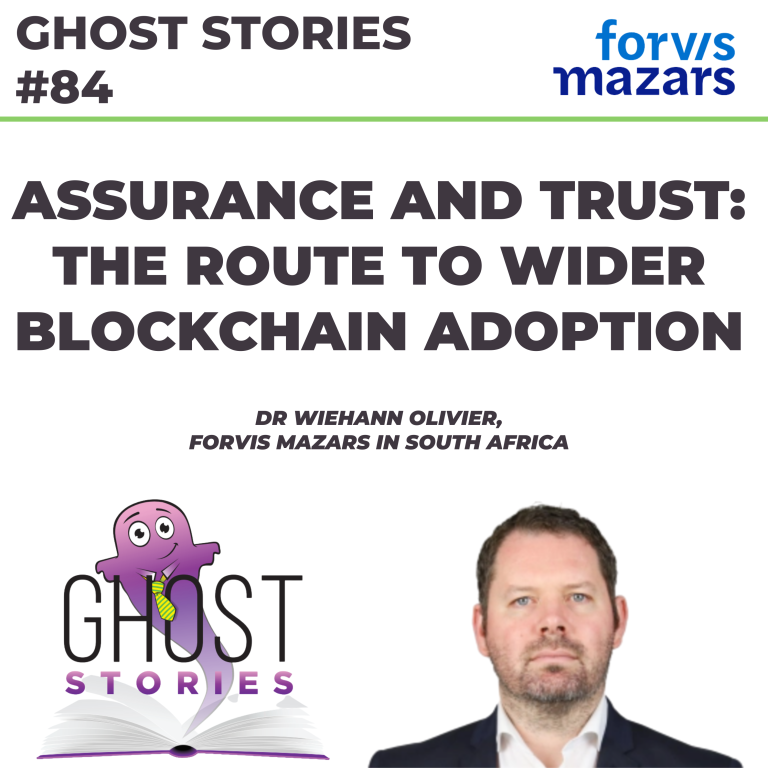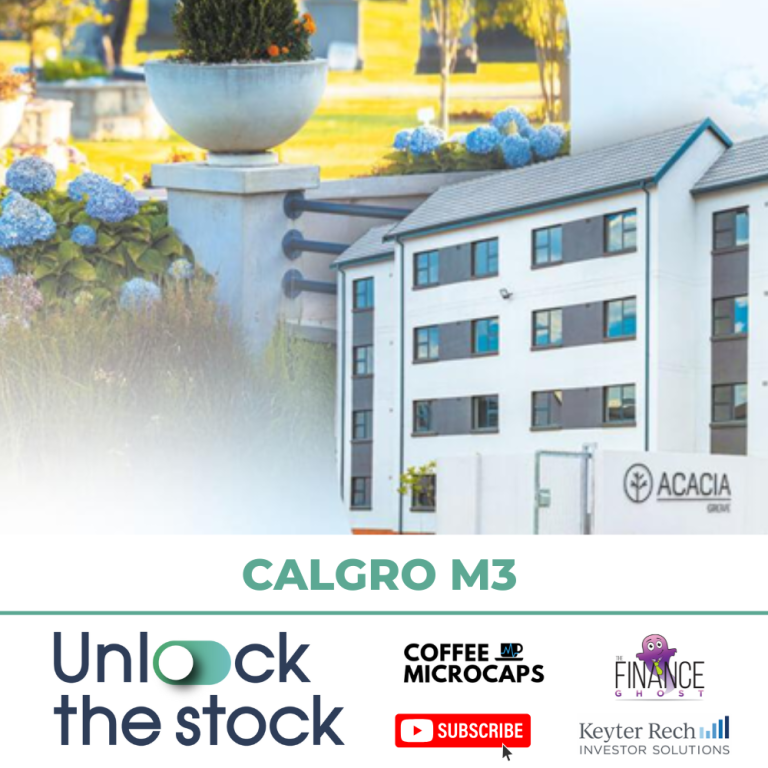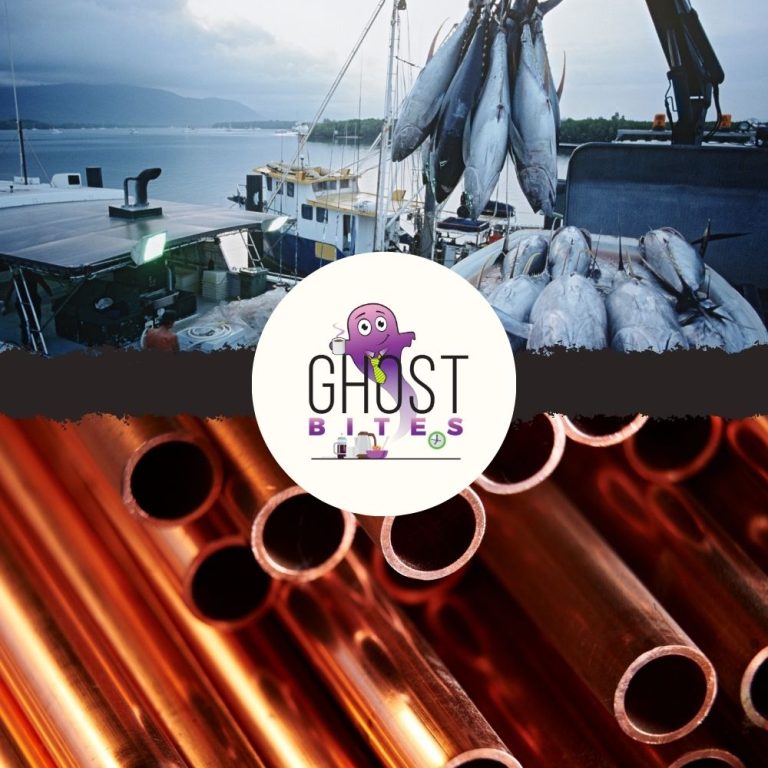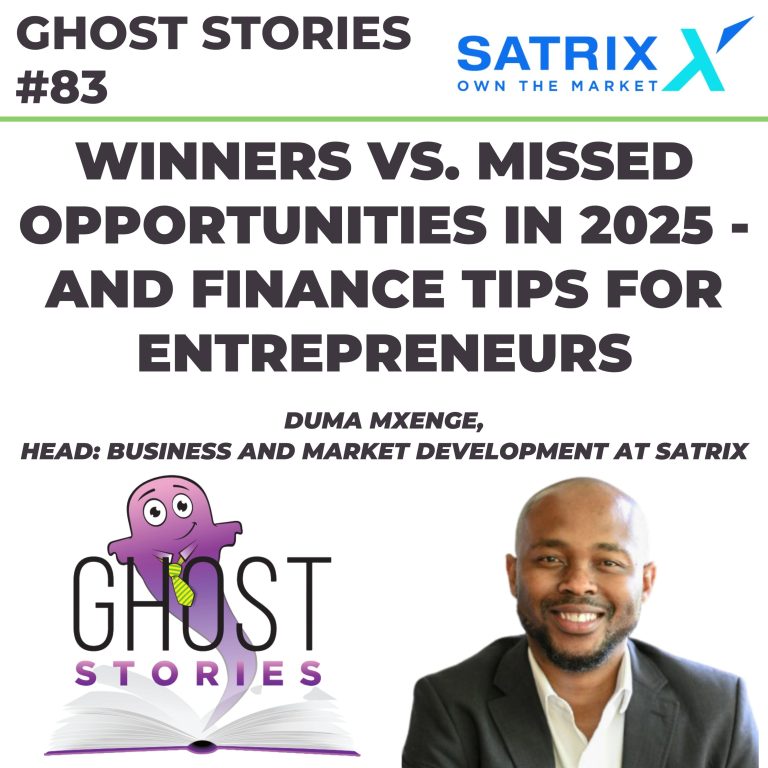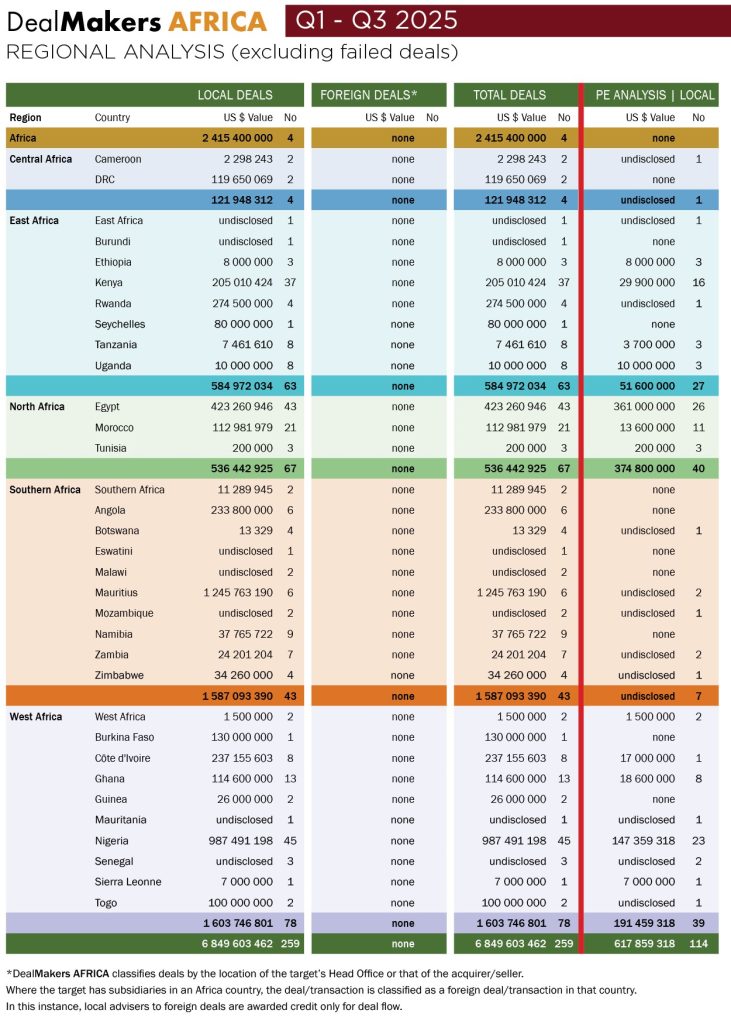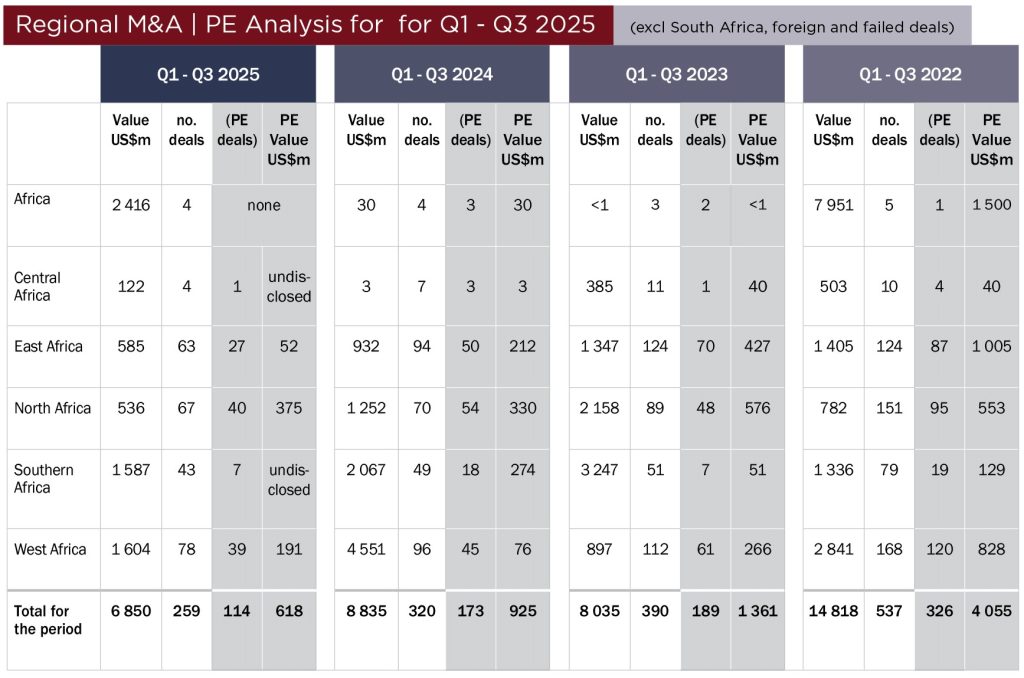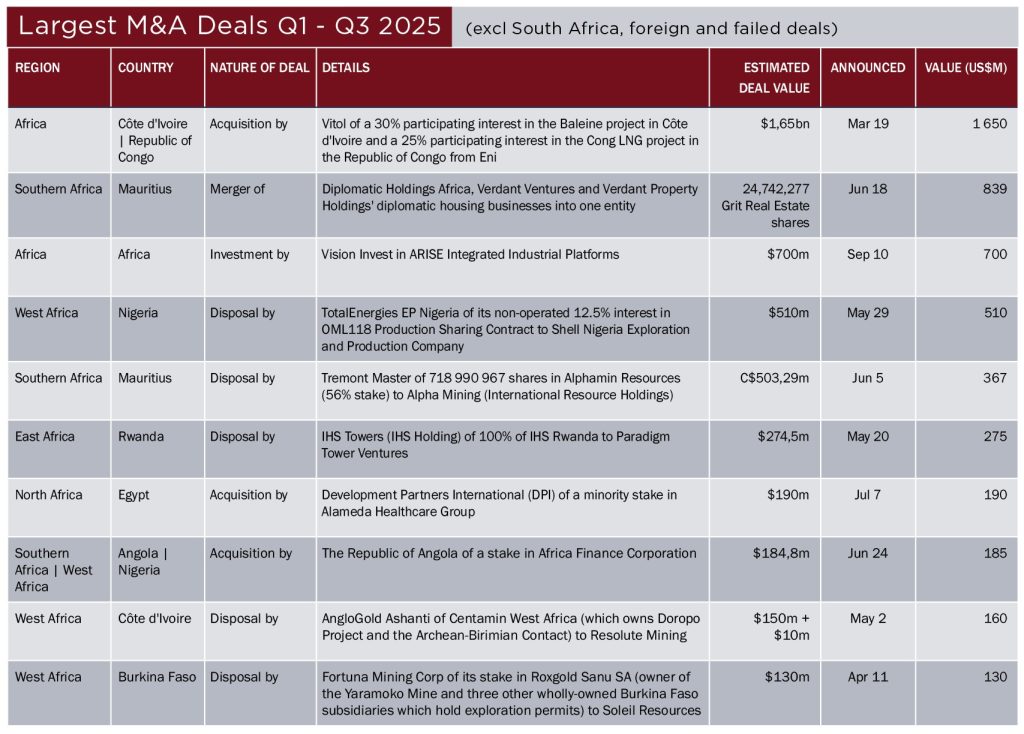Listen to the show using this podcast player:
A decade ago, barely anyone you knew would even have heard of Bitcoin and cryptocurrency, let alone blockchain technology. But today, the tokenisation of digital assets is so important that regulators around the world are paying increasing attention to it.
Dr Wiehann Olivier is passionate about the financial guardrails that need to be in place for digital asset adoption to increase. Having completed his PhD in topics related to the assurance needed in a blockchain context, Wiehann has become a subject matter expert within the global Forvis Mazars ecosystem.
On this podcast, he joined me to walk us through the evolution of cryptocurrency from the initial Bitcoin years through to the modern environment of stablecoins and widespread adoption by leading institutions.
You can connect with Wiehann on LinkedIn here.
Full Transcript:
The Finance Ghost: Welcome to this episode of the Ghost Stories podcast. I’m looking forward to having some fun here and certainly to learning some stuff as well, because I am by no means a crypto and blockchain expert. But the good news is that we have a crypto and blockchain expert on this podcast – and I really do mean expert, because Wiehann Olivier is the Partner and Head of Fintech, Digital Assets and Private Equity at Forvis Mazars.
That very long and exciting title these days can be summarized as ‘Dr’. So, well done, Dr Wiehann Olivier! You have gotten your doctorate and you did it on auditing cryptocurrency, which I think is really interesting. What an unusual Venn diagram. It sometimes feels like a lot of the people involved in the crypto space also want to be as far away from an audit as humanly possible, and a big part of your passion is in bringing those worlds together – which, of course, is a big part of blockchain adoption. So, welcome to the show!
Thank you, as ever, for doing this with me. And I’ve got to say, I’m really looking forward to digging in here.
Wiehann Olivier: Thanks so much for having me. It’s really exciting. I think we’ve spoken in the past about fintech and private equity, so venturing into blockchain-based digital assets is transitioning to the next conversation, I’m assuming.
The Finance Ghost: Yeah, the nice thing is your role really does what it says on the tin. We can basically go step by step and just tick off each section. You’re going to have to add some stuff so we can do some more of these next year. Let’s focus on the digital-asset side, which is obviously crypto, blockchain, the whole story.
Before we dig into all of that, I’m keen to understand more about this research you did recently (which is really interesting), how you actually ended up in this space, and then how that ties into the offering at Forvis Mazars. Because as I said, and I really meant it, auditing and crypto almost feels like an oxymoron. But, of course it can’t be if people are going to trust this stuff. So, give us the lay of the land in terms of the academic journey and what you are up to at Forvis Mazars in this space.
Wiehann Olivier: Sure. I started my journey with Forvis Mazars in 2010. Back then it was known as Mazars Moores Rowland (dropped the name to Mazars). But I started articles there, back at Mazars in Cape Town. Subsequent to that, I did my articles, resigned for six months, worked a little bit in private equity and real estate. Six months later, I decided to go back to audit (which was quite surprising because a lot of people try to get out of audit as quickly as possible), building basically my portfolio. Eventually made Partner in 2018.
But just prior to that, I think back in 2017, I started to look at blockchain-based digital assets because it was still quite niche at that point, but did have a little bit of interest in the asset class itself.
Once you become partner, everything gets pushed across your desk. So, all the cold calls, all the cold emails. And then, effectively one of the cryptoasset service providers (CASPs) in South Africa actually came across my desk. I went to see them, and I came back and said to my Head of Audit and my Managing Partner at that point, “There is real opportunity for us to get involved in the digital asset sector because my anticipation is that it is going to get really, really big, and I can see this integrating and see more, if I can call it, ‘speculative exposure’ to the asset class.” And I wasn’t far off, of course. Unfortunately, I had not put all of my life savings and retirement savings into cryptocurrency, otherwise we probably would not be having this podcast now!
From there, I started to build the practice. Started to onboard CASP clients, keeping an eye on the industry. And as that started to progress on a global basis as well, got a little bit of exposure. So, we first gained a lot of exposure in South Africa, and then on a global basis when the other firms – because Forvis Mazars of course is in more than 100 countries and jurisdictions and then, when these opportunities did pop up – they started reaching out.
So, effectively, I became like the subject matter expert on digital assets and spent a hell of a lot of time on the internet – researching, looking at the technology, and playing around with it – to truly understand where we can get that crossroad into the audit profession and digital assets.
Now, subsequent to that, I also did a Masters in Blockchain and Digital Currencies through the University of Nicosia. And then, of course, my role developed into the Head of Digital Assets at that point because we had a nice, chunky-sized portfolio.
Then at the end of 2022, FTX happened and the whole cryptocurrency market came crashing down. Everyone was scared, didn’t want to be in the sector, didn’t want to gain exposure to it. And we basically stayed put at that stage, so we were still servicing some of the clients that we had built up during that period. And then from that perspective, we also pivoted into fintech. So, that is where the role came from, from fintech and digital assets.
And then, while we waited for the market to mature, I also thought to myself, “Well, I’ve come this far. I’ve run the four-kilometre race. I might as well just run the five kilometres and do a PhD.” So, I spoke to a couple of universities. Already had an idea of exactly what I wanted to do, because I’m no academic whatsoever. I wanted to create a practical solution auditors can actually use on a day-to-day basis when engaging with the asset class. Effectively then completed my PhD on the subject matter of designing a framework whereby financial auditors can gain assurance over blockchain-based digital assets.
And then leading up to the point where we effectively sit now. I’ve got a new role as well, which is the Global Digital Asset Co-Leader for Forvis Mazars. So, basically overseeing the global strategy of the practice on a global front, overseeing all the countries and jurisdictions around the world. So, that is it basically, in a nutshell, in terms of how we got to where we are now.
In terms of the work that we do, we do a lot of assurance work for CASPs, both locally and abroad. We’ve serviced, I think, three of the top ten cryptocurrency exchanges on a global basis. We still service various CASPs in South Africa, both from a statutory and a regulatory perspective. Abroad, we service private and publicly listed entities that have exposure to the asset class. And of course, as I mentioned, I was fortunate enough to be utilised as a subject matter expert on most of these engagements, including the US, UK, Singapore, UAE, Switzerland, Germany, Sweden, Hong Kong. All of the countries around the world.
And then what I’ve also been involved with, more from an advisory perspective, is support to multi-jurisdictional banks in the EU – specifically in relation to blockchain architecture. We’ve worked with regulators on due diligences on CASPs. We are also currently working with regulated stablecoin issuers in Europe, performing internal audits. We’ve done a helluva lot of tax work, VDPs, tax structures, general advice, and to a certain extent, more so (and we will touch on it today as well) custody aspects and gap analysis around custody. We’ll talk about the various different aspects of custody.
Then, more recently, we also got appointed as the auditors for Africa Bitcoin Corporation (previously Altvest Capital). So, involved in that space. And then, quite interestingly enough, one of the areas that is more interesting to me is the legal aspect of it. I’ve been fortunate enough to be involved in multiple court cases as a subject matter expert on exchange control regulations, Ponzi schemes, and fraud investigations.
But I think I was fortunate in the sense that the nature of Forvis Mazars and where we evolved from (call it a smaller, all the way to a challenger-tier firm now) is you get exposure to a variety of sectors. And of course, exposure to digital assets and a variety of sectors actually gels well to position us in a very unique situation that we’re able to service a variety of clients in various sectors, when they’ve got exposure to blockchain-based digital assets, and provide very unique and bespoke types of services that they might need.
The Finance Ghost: It’s a pretty interesting career path, isn’t it? I think there’s a lesson in there around, number one, you just cannot predict what you will be doing in five years from now. I don’t think anyone can. And number two, it’s the combination of skills. I talk about this a lot. The Finance Ghost exists today because of a Tim Ferriss interview of Scott Adams who did the Dilbert cartoon. I read about it in I think it was Tools of Titans.
Basically, the principle was: you don’t have to be the best at one thing, you’ve got to figure out what you are the best at across a combination of skills. And in your case, it’s audit and crypto, which is unique. And you’ve managed to turn that into something so interesting. I think it’s fantastic. And to be able to provide that service to the entire global network of Forvis Mazars – there’s clearly a lot of expertise here. So, to listeners in South Africa (or anywhere really), if you are looking for some proper support here – from a financial perspective, assurance perspective, consulting perspective – Wiehann is a good man to talk to.
And by the way, Wiehann, before we get into some more of these topics. I did laugh at you saying you would run the four kilometres and you were like, “Oh, I’ll just do the five kilometres and make it a PhD.” A PhD is not one incremental kilometre. Unless it’s into the South-Easter with a Cape cobra maybe hissing at you on a beach somewhere, that’s maybe a one-kilometre PhD! Well done, nonetheless. I think it’s very cool.
Now, let’s dig into some of the really interesting stuff that I want to learn from you today. So, I think when people talk about blockchain, inevitably their minds still go to Bitcoin. Bitcoin is just synonymous with blockchain, and the other way around. It’s just the way it’s always been.
Is that right? First question. And do you think there has been enough development in blockchain thus far, not necessarily what is still to come but certainly up until now, that this world really has gone well beyond Bitcoin? Are people starting to distinguish between these two topics?
Wiehann Olivier: I think that’s a very valid question. To your point, it all started with Bitcoin. I mean, we all know Bitcoin’s white paper was released back in 2008 by an individual or group of individuals that we only know as Satoshi Nakamoto. And effectively what it said was it was designed to facilitate peer-to-peer payments over the internet, without the need to trust the individual that you are transacting with, and of course, without the need for an intermediary.
Now, it’s not necessarily any new technology that was created. It was existing technologies that were grouped together – like cryptography, like digital signatures, like consensus mechanisms – to effectively build what we know today as Bitcoin.
Now, I think what’s important to note is that, even though it was designed as a peer-to-peer form of payment (so it was designed for people to actually utilise on a day-to-day basis when executing transactions at a store or paying an individual), it also transitioned into a speculative asset class that we know today. It still upholds that peer-to-peer element of it, but there is also a speculative side of that in general, in terms of Bitcoin and most other blockchain-based digital assets – and we’ll get to the ‘most other’ in a while as well.
But, I think more importantly, it was designed to be money. But to be money, there need to be three pillars involved. It needs to be a medium of exchange, it needs to be a store of value, and it needs to be a unit of account. Now, store of value – it’s proven itself over the last couple of years. You’ve seen the price of Bitcoin increase dramatically. Medium of exchange – definitely, because you can go down to Pick n Pay and you can actually pay for your groceries, and most goods and services in South Africa as well, in Bitcoin. But, unit of account is effectively where that falls short, and we can chat a little bit about stablecoins and how that element of the three pillars of money was effectively solved.
Now, initially, when people wanted to gain exposure to the asset class, they went to coffee shops and they traded Bitcoin with one another over the internet, and they would pay someone else in cash. Of course, that evolved into online peer-to-peer places, and that evolved into cryptocurrency exchanges or ‘hybrid custodians’, as we refer to them. And then effectively that led to what we know today, where there is a fully regulated environment where you can actually gain exposure to the asset class through regulated vehicles such as spot ETFs, for example.
And I think all of this moves in terms of what we know today as the Fourth Industrial Revolution and Web3. Now, Web1 was of course where you can read information on the internet. Web2 was where you can read and write information on the internet. And Web3 is effectively where we are now, where you can read, write, and own information on the internet. And I think all of that plays to what is known as the digital economy. So, everything is being digitised – from artwork to identity, and now even currency. So, all of this plays into what is known as blockchain-based digital assets.
And I mean, it’s interesting. There are graphs available. If you take the adoption of the internet from the 1990s all the way to 2010 and you look at the trajectory of adoption of the internet by users, and you take those same principles and apply that to blockchain-based digital assets such as cryptocurrency and you take it from 2010 up until today. You can see that the trajectory of users utilising this technology compared to the internet – it’s got exactly the same trajectory. Think about where we are today and every single facet of our lives that we use the internet for, and think about that in the context of digital assets.
So, ten years from now, digital assets will be integrated so immensely into every facet of business that we do and perform on a day-to-day basis, and we won’t even realise that it’s there. That is why I think it’s so important for individuals out there, be it in every walk of life or every sector, to gain an understanding of the asset class. To be able to utilise it, but also to understand the benefit, because there are some real benefits in relation to blockchain-based digital assets.
The Finance Ghost: Yeah, I like that you took us all the way back there to Satoshi Nakamoto and this white paper. A little bit like Banksy in the art world, you know. No one knows who Banksy is, in theory at least. He’s done a pretty good job of keeping that a secret. The Finance Ghost is a poor relation of these things, because mine is really not that much of a secret at all. Banksy and Satoshi, those are the OGs in terms of keeping it under wraps. I wouldn’t mind having either of their bank balances. Well, not sure about Banksy, maybe the name is not a good clue there. But Satoshi certainly has a few bitcoins to his or her or their name. Or honestly, who knows? I suppose we may never know.
But what we do know is that adoption curve you’ve talked about, that is pretty interesting. And again, we can learn so much from history. It’s so important to actually look at what has happened before and then to say, “Well, what can we apply to what’s happening today from what we can observe in history, and what can we learn from that?”
And, speaking of learnings, I think this whole proliferation of stablecoins and trying to solve that pillar of money point that you talked about, that just speaks directly to some of the innovation in the space. Some of the development and all of that kind of thing. And obviously this leads into some of the more commercial use cases.
So, I’m going to hand it back to you to take us through maybe just some of those points around, okay, you know, we started with the sort of blockchain world and some IT geeks busy sending this stuff around the world and trying to understand how it works (and it’s amazing how technology starts like that). And then suddenly it gets to the point where your Uber driver starts pitching you Bitcoin, as was the case a few years ago, which is usually when you know it’s probably time to sell and climb back in later on. There is a lot of technology development that happens underneath all of this. So, you touched on stablecoins. Let’s talk a little bit about that, and just some of the other use cases and how things have evolved.
Wiehann Olivier: I think it’s an extremely interesting topic and I think it’s a very valid question that you’re asking. And I love the fact that it’s actually a sentence that was written in my PhD, where I specifically said that the blockchain-based digital assets have evolved, beyond a mere niche type of technology that is being utilised by internet geeks, to a multi-trillion-US-dollar asset class as well. Currently, I know that we’ve seen a significant drop in the price, but I think it’s still under the top ten asset classes globally as well. Gold of course sitting, I think, over $20 trillion. But I think cryptocurrency, if I’m not wrong, is sitting just south of about $3 trillion.
But, in terms of the history. So, we know where blockchain technology effectively came from back in 2008 with the first transaction being executed in 2009. But that was the initial development and where we saw blockchain technology actually being utilised and seen as a real technology that might have utility in the long run. Fast-forward a couple of years of course from 2008, you see the likes of blockchains coming up, such as the Ethereum blockchain, for example. What was interesting as well is that the Ethereum blockchain was a blockchain in the normal sense, but it had a certain functionality that Bitcoin didn’t necessarily have. It had what we know as smart contract functionalities as well.
So, if you’re talking about Bitcoin, capital B, you’re talking about the blockchain itself. If you’re talking about bitcoin, lower-case b, then you’re talking about the native currency. That’s what we trade and hold as a store of value. For Ethereum, that is the Ethereum blockchain, and of course the native token of the Ethereum blockchain is Ether. That is the cryptocurrency that we sometimes call Ethereum as well, that we effectively trade on the Ethereum blockchain.
Now, with smart contract functionality, the Ethereum blockchain allowed for something spectacular. It allowed for individuals and developers to actually create a non-native token on that blockchain. So, of course, Ethereum blockchain has the native token of Ether, but now you are allowed to create a token that is listed on the Ethereum blockchain. You set the rules and the parameters, but it’s not linked to the blockchain per se. So, now we create a world where we can create all of these alternative coins that we see out there today, but also with that element of course came non-fungible tokens (NFTs). So, NFTs are based on the ERC-721 standard, and of course these non-native currencies that we see on the Ethereum blockchain are what we refer to as ERC-20.
But first of all, let’s chat about NFTs. I’ve never been the biggest fan of NFTs. You saw pictures of apes being sold…
The Finance Ghost: That was the worst for me. Just a classic example of things that give technology a bad name. That’s what that was for me.
Wiehann Olivier: Yeah, there’s that meme about a guy, I think, “I bought this for let’s say $1,000, I sold it for $20. For more financial advice, follow me.”
The Finance Ghost: Yeah, exactly. The Bored Ape Yacht Club. That’s the vibe on Twitter/X. Yeah, I remember.
Wiehann Olivier: So, Jack Dorsey’s tweet was sold on auction for millions of dollars, and when it went on secondary auction, it couldn’t even be sold for $1,000 or something like that. That just shows the hype that was created with NFTs.
But NFTs weren’t all bad. I always make this comparison to Lego. So, I think we have actually spoken about this in a previous podcast, but if you take Lego, for example. Lego is fun and games as a child, it helps your mind develop in a certain way. But you don’t make a living playing with Lego. And to the same extent as well, NFTs were exactly that. It let people realise that there’s some capability of having a digital representation of a real-world asset (or a digital asset) that can be housed on the blockchain and piggyback off of the various intrinsic values that a blockchain effectively offers.
Now, of course, that’s NFTs in a nutshell. These altcoins are effectively non-native cryptocurrencies listed on a smart contract blockchain such as the Ethereum blockchain. And that is what we see today in terms of these Trump coins and ApeCoins and all of these memecoins in circulation. There is a helluva a lot of market manipulation taking place, because it’s still fairly unregulated.
As far as possible, I believe that people need to stay away from that as well. You need to look at the asset class for long-term purpose and long-term utility. You need to make sure that you are investing into something that actually has intrinsic value, that has utility, as opposed to just being a meme of a cat climbing a tree or whatever the case may be.
I think that is also important to understand – that you have this world of altcoins as well. And of course, I’m not going in the route of central bank digital currencies (or CBDCs) because effectively all that is, is private permission blockchains. It’s just a database housed by one individual, and they just call it a blockchain to try and sell something that it’s not.
To come back to the two examples – so, with these NFTs, it developed our mind in terms of a way of thinking about how blockchain-based digital assets and the technology can be used in other shapes and other formats. That led us to today where we are, in terms of the tokenisation of real-world assets. And we can chat about that in more detail, but effectively, it’s where you tokenise a real-world asset (such as a share or whatever the case may be) and list it on the blockchain. I mean, BlackRock, the world’s largest asset manager, has a tokenised fund called BUIDL. I think that market cap is currently sitting at about $2.3 billion to $2.8 billion. But that’s effectively what we got from NFTs.
Likewise, with these altcoins, what we saw is the development of something referred to as stablecoins. And this was so fundamental in terms of where we stand today in digital assets because we spoke about those three pillars of money, and the one aspect that general cryptocurrencies fell short of was that unit of account, because you couldn’t price your goods and services in Bitcoin because the price would be all over the show. So, now what they did is they developed stablecoins. So, now it is a non-native ERC token on the Ethereum blockchain that is backed by real-world assets, being the US dollar. So, effectively the likes of Circle and Tether, what they did with their business model, for every dollar they received in their bank account, they issued $1 on the Ethereum blockchain. So, it is always backed by $1, so you do not become de-pegged, and you can actually pay for goods and services with these stablecoins. So, there is also a lot of risk involved with these stablecoin issuers.
But I think the fundamental issue that it solved is that unit of account, because now you’ve got an asset class that can move over the internet and over the world as freely as cryptocurrency. It is backed by the security, the decentralisation aspect of it, but it’s not as volatile. And that’s why it’s being used predominantly today across the world for cross-border payments and remittances to such an extent, if you look at Visa and Mastercard, that the volume of transactions in the 2024 calendar year, as well as the 2025 calendar year – stablecoins have overshot Visa and Mastercard put together. I think if you look at the stats of 2024, the total volume of stablecoin transactions globally compared to that of Visa and Mastercard is 7.8% higher than that of Visa and Mastercard.
So, there’s a lot of money flowing across borders and between businesses and customers and individuals, with the utilisation of stablecoins. And as I mentioned, there is real benefit to people and the man on the street when they engage with the asset class.
The Finance Ghost: And I would think that the stablecoins world is where so much of the assurance risk comes from, right? Because some of these memecoins have got names that are far too PG for this podcast, so I will not mention them. If you know them, you know them. If you don’t, you’re probably better off.
But when you get into the stablecoins where you need to trust that there is a dollar sitting behind this thing, or a rand, or whatever the case may be – that is a big assurance topic to make sure that is the case. And of course, people use the argument and say, “Well, fiat currencies are not backed by gold anymore. There isn’t a set amount of gold in a vault somewhere.” But the point is that they aren’t as volatile, so then you can price things in rand, etcetera.
You just have to look at what happens in hyperinflationary situations where countries with rapidly depreciating currencies then switch to, “Oh, we’ll just transact in dollars.” That’s almost desperate for a stablecoin. And you actually have to wonder, well, what could have happened in Zimbabwe, for example, when the Zimbabwean dollar collapsed so severely. And I haven’t followed all the stories that have happened in Zim since then (it’s just one disaster after the next, really), but how would stablecoin crypto have made a difference at that time?
It’s just really interesting stuff to think about. This is how tech adoption works. And, like you say, it is silly stuff like NFTs and buying pictures of apes and crazy stuff. That in and of itself is daft, but it leads to people understanding more about what the tech can be.
Wiehann Olivier: No, you’re 100% right now. I’ve spoken to a lot of individuals within Africa as well. Cross-border payments, remittances is where stablecoins are key. But also there are individuals actually earning their salary in their local currency, purchasing US-dollar backd stablecoins because it’s so easy. And then they utilise that as a hedge against a devaluation of their local currency. It’s a no brainer. Where you send funds across from South Africa to let’s say Zambia, you would pay 12% in remittance fees. Now you can get that as low as 2%! So there’s real opportunity in terms of using the asset class to put back money into the pockets of especially African individuals.
The Finance Ghost: Frontier markets. I love that example because that is actually such a good real-world use case. There doesn’t need to be this huge issue in the middle that makes it so difficult and so complicated and so costly. It’s like what it costs to buy and sell property, it drives me insane. It’s unnecessary. Blockchain doesn’t solve that by itself because a big chunk of it is tax. But at the end of the day, if we need to keep a record of who things belong to and at what price, that’s where blockchain becomes interesting.
You really have to wonder why the deeds office is not running on the blockchain, whatever the case may be. And maybe it will, maybe it won’t. Who knows where we get to with that? But this is the kind of disruption that can come through.
Wiehann Olivier: Yeah. It’s the talking point across the world that deeds offices actually need to run on blockchain. So, it’s there for everyone to see. They can follow it. It is immutable. It is transparent. But I think that is a key thing that a lot of people misunderstand about blockchain-based digital assets.
Of course, there was a certain period where a lot of illicit trade was facilitated using cryptocurrencies. In hindsight now, if you’re able to gather all the data (and there are a lot of analytic tools), it’s probably the worst thing that you can use in the world – because every single transaction can be traced.
And, because most cryptocurrency exchanges also have KYC requirements as well, you can track every single transaction being executed on the blockchain. So, it’s actually easy to pick up instances of money laundering and fraud.
The Finance Ghost: So, I want to get into the regs just now, but one more question before we do. I’ve seen a lot more of this tokenisation of real-world assets and a lot of that stuff that’s going on, tokenisation of financial assets, people debating whether shares should trade like this, and there are platform providers in South Africa doing this kind of stuff.
What is the problem that crypto is trying to address when we see stuff like tokenisation? Should shares rather trade on a blockchain? Is it a cost thing? Is it a systems thing? Is it a security thing?
Because critics of crypto will say things like, “It’s a solution desperately looking for a problem.” In other words – if it’s not broken, don’t fix it. That’s kind of the counter-argument. So, where do you think this stuff is actually genuinely moving things forward? Because, I mean, that remittances example is brilliant. It’s spot on. I can totally see that. In other places, it’s not always obvious what the benefit of blockchain would be.
Wiehann Olivier: So, I think, if I can summarise it in its entirety, it is to cut out friction. And I will give you the example. Larry Fink is the CEO of BlackRock. So, when he started looking at blockchain technology or Bitcoin as a whole, he thought it was a Ponzi scheme. Fast-forward a couple of years and they’ve got one of the largest funds running on the Ethereum blockchain. Because he saw the benefit of cancelling out all of those fees in relation to intermediaries, because these transactions can now seamlessly be executed on the Ethereum blockchain.
In addition to that is the speed whereby the transactions can be executed. So, I’ve spoken to a lot of individuals globally and a lot of my peers and fellow colleagues abroad. A lot of the time with traditional finance, they speak about T+3. But with the use of blockchain technology, tokenisation of assets, stablecoins, you can basically be sitting in a situation where you are talking about T+0 – and I’m talking about T+0 seconds, where transactions are effectively executed immediately.
I think in addition to that (and I’m very curious in terms of how this will play out), you have traditional markets running, let’s say, from nine to four, or whatever the case may be. But once you’ve got a situation where traditional stocks and types of assets are tokenised, put on a blockchain that does not close – blockchain runs 24/7, 365 days a year. I had a partner within the United States and he said, “The Bank of Bitcoin is always open.” It’s exactly that. So, now you’ll have these weekend warriors actually trading full-time over the weekend as well, because they are able to get access to the market on traditional stocks as well.
So, the long and the short of it is cancelling out that friction. It’s the cost involved, and it’s the time involved as well. Security – yes, the asset class does provide some element of security that traditional let’s say ‘databases’ don’t necessarily provide. But with traditional finance as well, they have certain securities and parameters and controls in place to make it secure. So, I’m not saying it is more or less secure putting those assets on a blockchain.
The Finance Ghost: Thank you, that’s super interesting, and I guess this brings us neatly to the regulation point because here’s the funny thing about regulation: it protects people, but it introduces friction. And too much regulation takes away the whole point of this progress. You basically regulate it to death (something Europe loves doing) or you find a happy medium (which I think the Americans tend to get right, although not always).
I’m not sure where South Africa ranks on that spectrum. I mean, my own experience with some of the regulators and some of the deals that happen out there, I’m worried that we might go too much into regulation land, but I’ll let you comment on that because I’m really not speaking from a place of experience there, more a space of fear.
In terms of the regulatory environment, South Africa has been doing some stuff. So, walk us through what is happening here. And then maybe just give us context – and this is probably the most important thing – where would you rank us, on the sort of global regulatory scale, from under-regulated to over-regulated? Where do you think we’re going to land?
Wiehann Olivier: Yeah, I think you summarised it well and said the regulators have ‘done some stuff’ because it’s exactly what it is. But I think, if we look at regulations around blockchain-based digital assets, countries had three options that they could take. They could take a blanket ban, as we see with the likes of China. They could regulate from the get-go, as we saw with the State of New York (of course, that did not pan out well because most CASPs tried to stay away from the State of New York). And then you could take the wait-and-see approach, and that is to a certain extent what South Africa did, in time, to regulate the asset class.
But let’s take a step back to our old friend Mirror Trading International. The biggest Ponzi scheme in 2021, if I’m not mistaken. In today’s value $3 billion that was effectively stolen, I think. Close to 30,000 bitcoin. But, effectively, what was in place at that point was no regulations. The regulations that were in place were in terms of a Companies Act regulation, and you don’t have any monitoring taking place from the Registrar of Companies making sure that companies actually are audited and they submit their financial statements.
And I think that’s where you can see the fraud effectively happened. Because Mirror Trading International was incorporated on the 30th of April 2019, and effectively they had ten months until the point that they reached their financial year-end. But at that given point in time they, technically speaking, should have appointed an auditor. Then they carried on for another six months. At that point, they would have been required to issue audited financial statements because they were holding assets in a fiduciary capacity, which would have been the 31st of August. But of course, we had no regulator whatsoever in place at that point looking over CASPs, as we knew it today. And of course, that meant the scheme carried on up until November 2020, where effectively the whole house of cards basically fell in and everything came to light.
And I think what’s important there to note, as well, is the fact that there are a lot of people that say regulations are not the best thing for blockchain-based digital assets, and the asset class was designed to operate outside of the constraints of the traditional financial world. And to that extent, they also believe that tax should not apply, and then it should not be regulated. But if you look at the value of the financial harm being caused to individuals based on that – and that repercussion still is ongoing today with the MTI liquidation case that has not been finalised – that is the thing. Stakeholder protection is what regulations are there for and what it needs to achieve.
Now, in terms of how that is rolled out, and of course more importantly, how that is monitored, is definitely a different discussion that we can unpack as well.
So, the FSCA basically brought out this position paper where they said they are going to classify the asset as a financial asset under the FAIS Act, if I’m not mistaken. So, then I was expecting regulations to kick in fairly soon. But a full 12 months went on and no regulations. Eventually, the FSCA rolled around and said they’re going to issue this licensing regime for CASPs where you need to apply for the licences.
Now, interestingly enough, a lot of CASPs in South Africa had applied for the licenses, I think it was in November 2024, and a lot of them had been issued. Up until today’s date, there were about 248 licences in issue, the last time I checked. So, that’s a lot of licences for CASPs in South Africa. And if you compare that to the likes of the UK – 44 licences issued, Germany – 9, Hong Kong – 11, Singapore – 33.
So, the big question that we need to ask here is – are we too willing to issue these licenses to CASPs? Or are we setting ourselves up for failure again? Because my biggest concern is not the issuing of the licence. Sure, these CASPs make sure that they tick all of the boxes when the licensing gets issued and when the inspection is taking place. But what happens afterwards? Is there monitoring actually taking place from the regulator side to make sure that these CASPs are still acting above reproach as well?
So, that’s one of the fundamental concerns I currently have with the industry as well. But, I mean, if you take it from that as well – the monitoring element (and we’ve spoken to this a lot as well), is the FSCA expecting auditors registered by the IRBA to effectively play that role? Because if you have a Category 2 FSP licence that allows you to deal with cryptocurrencies or be a CASP, it requires you, in terms of the law as well, to be audited.
Now, who are the auditors of these 248 CASPs? Do they have the necessary experience and skills to be issuing audit opinions on these CASPs? And, to my shock and horror, speaking to auditors locally and abroad, some of the procedures that they execute when gaining assurance is far from anything close to what we would be doing in assurance from an auditing standard point of view. And I always say, within the digital asset sector, it’s not what you don’t know that gets you into trouble, it’s what you don’t know you don’t know.
You can’t be issuing audit opinions if you don’t fully understand the industry and the technology. Hence why that was the idea behind the topic of my PhD – to give that framework to the general public, to give back something that can be utilised, so we don’t have another downfall of an FTX or a Mirror Trading International that cause reputational harm, not only to the digital asset sector but also to the auditing profession as well.
Also, going on to regulations as well, we talk about income tax to a certain extent as well. Income tax has been phenomenal. They have only rolled out one definition and that is defining cryptocurrency and saying that the normal rules apply. So, aside from that, we haven’t even seen any authoritative guidance whatsoever from SARS.
So, to a certain extent, there are a lot of people that still believe that cryptocurrency is not a taxable event, that crypto-to-crypto is not a taxable event, if I receive bitcoin from abroad, it is not a taxable event. And that is why we need this authoritative guidance from law makers and regulators, such as the revenue collection agencies of South Africa.
There is this whole debate about whether cryptocurrency is deemed to be capital and when it is deemed to be income. Now, a lot of people will go to Section 9C of the Income Tax Act, and they’ll say, “Well, I held the bitcoin for three years, therefore it is deemed to be capital in nature,” but there is no fruit-and-tree principle. However, within the tax returns, you can define it as capital or income without any authoritative guidance being provided. And it feels a little bit like a trap that they are setting for you as well, without that guidance being provided.
And then the big elephant in the room that a lot of people are talking about is exchange control regulations. We saw earlier this year, the South African Reserve Bank versus Standard Bank on exchange control regulations, specifically in relation to cryptocurrency. The judge summarised it quite well there in terms of him saying the South African Reserve Bank had failed to regulate cryptocurrencies because the asset class has been around for a number of years.
And I mean, the figures are there if you run the blockchain analytics. There has been millions and billions of rand externalised from South Africa without proper exchange control approval, and it has been facilitated by way of blockchain-based digital assets. Stoppers could have been put in place. They could have made CASPs custodians of making sure that individuals follow the SDA and FIA rules as well, but that has not happened, and that summarised it quite well.
Of course, that court case is up for appeal. I think that appeal is being heard in January of this year, and then we’ll see where it lands. But I think, more likely than not, there will be a change in exchange control regulations.
But then of course, the other elements of things like listed securities, like ETFs. So, at the beginning of 2024, we saw that in the US there were several bitcoin spot ETFs listed on the NASDAQ. And it was quite interesting to see, within the first eight months of those bitcoin spot ETFs that were listed, $17 billion flowed into those ETFs. In comparison, the Gold ETF launched in 2003 and took about three years to reach that same level. So, you can see there was a dire need for this asset class in a more regulated environment.
Of course, if we look at it from a South African context as well, the JSE in September of this year rolled out a position on exactly what these bitcoin spot ETFs would look like, if you hold the assets directly within the fund as opposed to having another instrument invested in, or whatever the case may be. So, very interesting to see there, but the one focus that they are looking at is the custody element of it as well. And I think that is important for the listeners to understand. Custody is where your real risk comes in.
So, if you use self-custody, that means you hold your private key to your public key, which means like your PIN to your bank account. With custodians, you are exposed to a custodian. So, now you rely on a custodian to keep your assets safe. But what we saw with the downfall of FTX, there are custodians that use custodians, that use custodians, that use custodians. And now, of course, that creates a ripple effect to the market as one of the custodians fails as well. So, that is where the real risk arises with blockchain-based digital assets.
And you’ll hear about hacks, and we can check about smart contract flaws and those sorts of things. It’s not the blockchain that is being hacked. It is effectively that custodian, or the mechanism whereby the private key is secured, that fails. And that’s where hackers put their focus when trying to misappropriate funds.
So, within the JSE, of course, we will see a lot more bitcoin spot ETFs listing. At the conferences, it seems like there is a lot on the table in terms of spot ETFs that they want to list in the near future as well. So, we will see what that looks like.
But I think lastly is the stablecoin element of it as well, and this is quite interesting. Stablecoins have been around for a long time, but the regulation has not necessarily been around for a long time. You summarised it well in terms of Europe and the regulations because they always say, “US innovates, China copies, and Europe regulates.” And it was exactly that.
This innovative example of stablecoins came from the US. Not too long after the GENIUS Act was rolled out, the Hong Kong stablecoin ordinance was rolled out, and Europe still does not know exactly what they’ll do. Still trying to figure out how to regulate the asset class as well. So, it summarised that well.
But I think what was so genius in the GENIUS Act is the way that it was written to create a demand for the US dollar, and also to create demand for Treasury bills as well when issuing these US dollar-backed stablecoins. And I think that is the type of innovation that I would love to see from a South African context as well, which we are not seeing.
With the budget speech of this year, one of the paragraphs actually included from the tech side of it is that, I’m not sure if it is the Intergovernmental Fintech Working Group, will issue a position on stablecoins in South Africa and recommendations in terms of how it will be regulated, or whatever the case may be. And that is expected in December of this year. So, that’s expected to roll out next month, based on the budget speech as well. So, hopefully, there is something positive coming out of this year for blockchain-based digital assets in South Africa, but we will see where it lands.
But once again, if you look at the GENIUS Act, rolling back to that – it has got very interesting characteristics, besides creating that demand for the US dollar and for the Treasury bills. It also has a mechanism in there that they call stablecoin attestation reports. So, now effectively what they need, and of course what you mentioned earlier in the conversation is, how do you know your assets are actually there? How do you know that a stablecoin issuer that says your stablecoin is backed by $1 or some similar type of asset that actually exists is there? Now the legislation is written in such a way that these stablecoin issuers are required by law to undergo attestation reports on a monthly, (or, referring to the Europe context, on a regular) basis where they need a third-party auditor to come and actually see that the assets exist there, and how that corresponds with the smart contract that actually issues that stablecoin.
And the most interesting part about this is they are not required to report to the regulator alone on this. They are required to report to the general public on this. So, it should be made available on their website as well. And we saw this with the GENIUS Act, with the Hong Kong Stablecoin Ordinance, and with MiCA as well. So, that is the true principle of what it means to provide stakeholder protection. Of course, you can do something that is good for the country and good for the fiscal, but you also need to be mindful of that stakeholder protection, and I think that is what the GENIUS Act did.
The Finance Ghost: It’s super interesting in this space. I was reminded while you were chatting and you were talking about mirror trading and all of that, I remembered reading in the press a couple of years ago about Usain Bolt losing a whole lot of money. And I thought it was a crypto scam, so I went and Googled it. My base case is that it was a crypto scam because it so often is!
But actually, it looks like that was just money that basically disappeared out of his bank account, which is just astonishing. So it just shows you none of these things are perfect. It’s just banking is a lot older and has had more time to be regulated and is a lot better, but stuff still happens.
And I also went and looked now – I asked Copilot and I asked Google AI and got two different answers. What a massive shock Wiehann, look at that – AI giving me two different answers! But there are roughly somewhere between 35 and 40 banking licences in South Africa. So that’s an interesting thing to compare to the number of CASP licences. So that’s commercial banks, mutual banks, local branches of international banks, etcetera. You would certainly expect there to be far fewer banking licenses than CASP licences. But it is interesting to contrast the two.
I guess if you don’t have enough licenses, then it’s too easy for the black market to just carry on. They’ll just say, “Oh, there aren’t enough providers” and they’ll just do their thing. If you have too many licences, you’re bringing more people into the net. It then becomes harder to justify doing unlicensed stuff, but you’ve got to monitor it, and that’s obviously where the risk is of that falling over.
So from a regulatory perspective, it’s going to be very interesting. I think the next podcast you and I do, we should actually really dig into the custodianship and all of that stuff so people really understand these concepts, because I think we could dedicate an entire podcast to that. But in the interest of time on this one, I’m going to ask you one more question, which is over the next 12 months, more or less, and you’ve hinted at some of the stuff that might be coming, but what are you looking out for? Not just in South Africa, but internationally as well. In the world of crypto and blockchain, what do you think some of the big focus areas are? What are you excited to see? What does it mean for you?
Wiehann Olivier: I think if digital assets taught me one thing, it’s definitely humbled me in a lot of circumstances, especially from an investment perspective, and how the technology can evolve and how it has evolved over the last couple of years. But it also taught me something fundamental that I carry with me on a day to day basis, that 12 months is actually quite a long period and you think a year from now it feels like around the corner, but a helluva lot can happen in 12 months. And specifically so with the digital asset sector and the way the technology moves and the way that individuals innovate to that extent as well.
South Africans have been very innovative even in a global context. I mean, a lot of the virtual asset service providers that I speak to globally as well have some connection to South Africa or are actually South Africans as well. I think that’s the way that our brains are wired, based on our traditional banking system and solving issues and those types of things. But it’s really phenomenal to see.
But in terms of what the expectation is going forward, first of all, regulations, there is going to be a helluva lot more regulations and secondly there need to be a helluva lot more regulations because at the end of the day we need stakeholder protection. Of course the asset class provides the element of efficiency for people to utilise in their day to day lives or from an investment perspective, but they need to be protected as well to a certain extent, and I think that’s what regulations effectively offer.
I think real-world assets are probably going to be the fundamental area going forward. We’re going to see whether we’re going to have a further integration of interoperability between different blockchains because of course we do have the issue of thousands of blockchains out in the world and these blockchains need to start to speak to each other. I’d like to see a decrease of alternative coins or meme tokens or whatever the case may be, regulations around that, so we can get that out of the market and get that cleaned up. But I think stablecoins and real-world assets within the traditional financial services world are going to be key.
We’ve had a lot of discussions globally, especially in Europe, with auditors and fund administrators and fund managers to see what the impact of real-world asset and tokenisation of real-world assets will effectively look like going forward, what would be the regulations around that and how users will effectively obtain the benefit. I want to say 12 months from now, but knowing the way the technology evolves, I’ll probably say zero to six months is going to be the focus and where I see a lot of activity happening as well.
And of course from a South African context, a lot of regulations, we will probably see exchange control regulations being clamped down as well. And I’m hoping the FSCA also cleans up the CASP licensing regime a little bit and God forbid we see any downfalls or similar types of MTI and FTX setups in South Africa. But yeah, that’s basically the expectation from my side.
The Finance Ghost: Wiehann, thank you so much. Always so much to learn from you. I’m going to link through to your profile on the Forvis Mazars website and to your LinkedIn in the show notes for those who want to reach out.
I think you are certainly coming through as one of the genuine experts in the space in South Africa, so to anyone in the industry who wants to understand more about digital assets and some of the regulations around it, and how this can be audited and a lot of the professional services around it that have been around the banking industry for so long and desperately need to make their way more into crypto, Wiehann is certainly a good guy to speak to.
Wiehann, thank you so much for your time on this podcast. It’s been really cool. I’ve learned a lot, and I look forward to doing the next one with you.
Wiehann Olivier: Thanks, Ghost, appreciate the time and great being on the podcast again.

